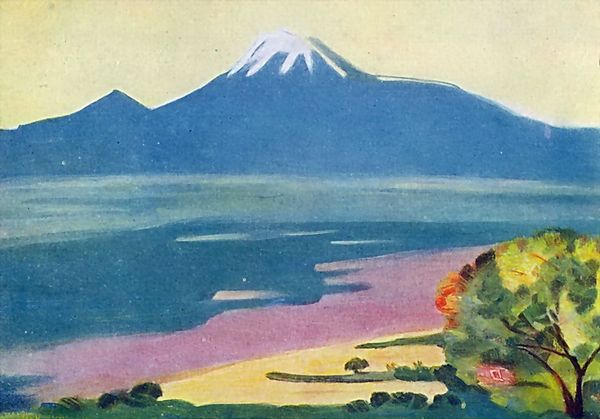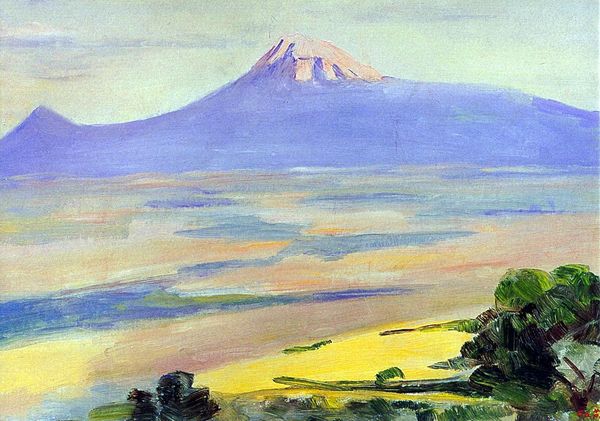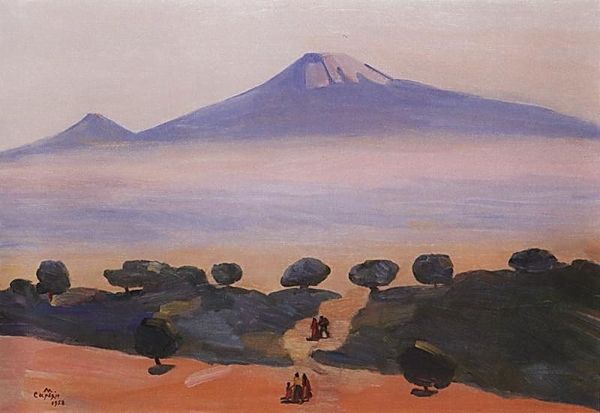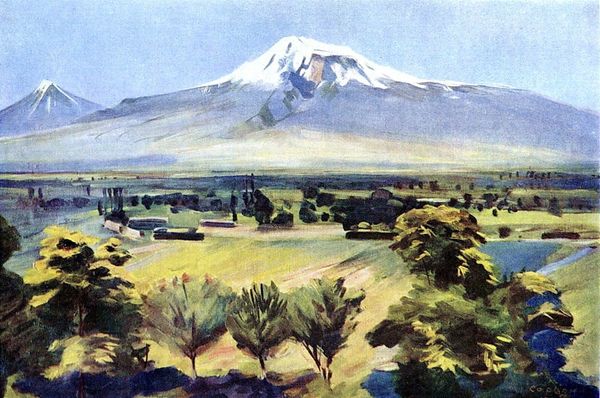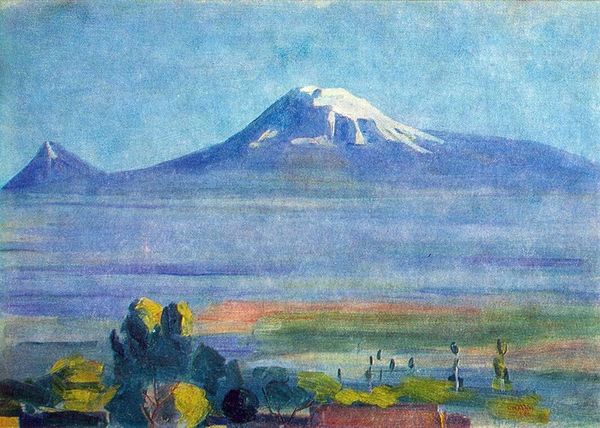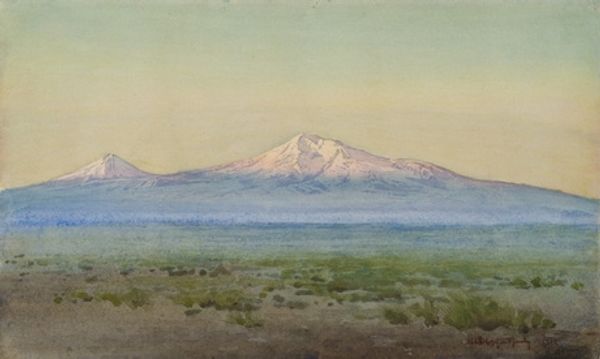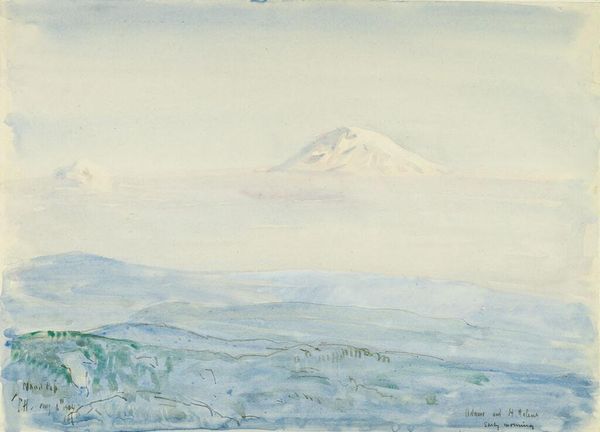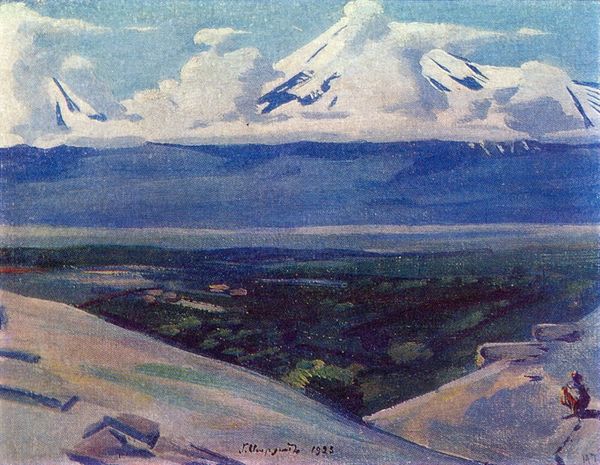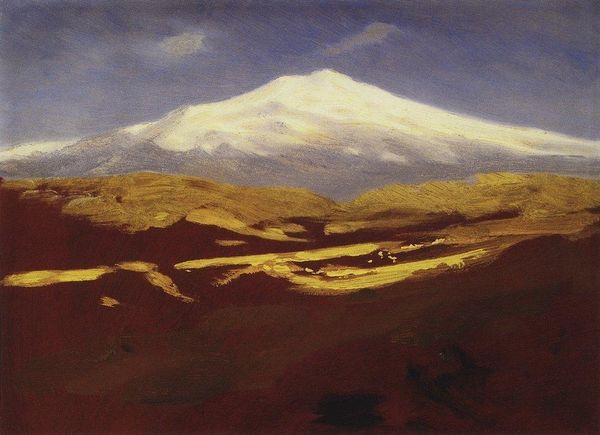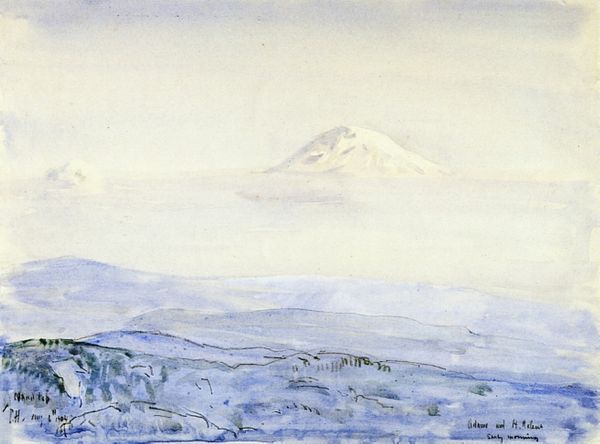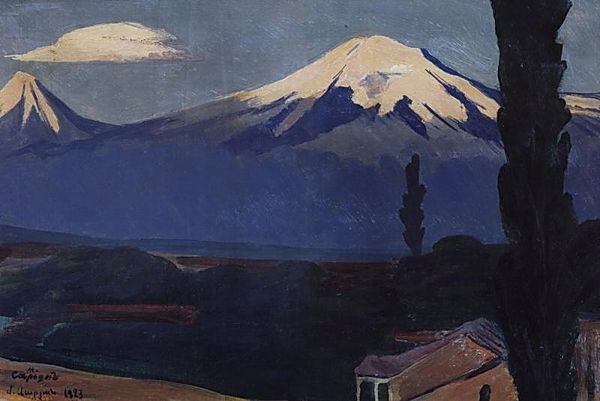
Copyright: Martiros Sarian,Fair Use
Editor: So, this is Martiros Sarian’s "Mount Ararat," painted in 1961 using oil paints. The landscape has this almost dreamlike quality, with the mountain hovering in the background. It’s so serene. What strikes you about it? Curator: What I see is a deliberate construction of Armenian identity during a specific period in Soviet history. Ararat, of course, is a powerful symbol, deeply interwoven with Armenian heritage, despite now residing in Turkey. Think about the implications of displaying this image publicly during the Cold War era. Editor: Public display? How was it perceived? Curator: Its accessibility within the Soviet Union sent a potent message about cultural endurance and unspoken national aspirations. Sarian wasn't merely painting a mountain; he was reasserting a connection to a lost homeland, framing Armenian identity within a complex political landscape. Editor: So, it's more than just a pretty picture. Curator: Exactly. The hazy, almost ethereal depiction also avoids direct confrontation. The dreamlike quality you mentioned might be interpreted as a strategic choice, allowing for cultural expression without directly challenging Soviet authority. The impressionistic style softens any overt political statement, rendering it palatable to censors. Editor: That’s fascinating! It’s like a subtle act of cultural defiance. Curator: Indeed. And consider the role of museums and galleries in shaping this narrative. By exhibiting "Mount Ararat," they were participating in this delicate dance between national identity and political constraints. What did Sarian risk with this piece? Editor: It’s incredible to consider how much history can be embedded within a single landscape painting. I’ll never look at it the same way. Curator: Precisely, seeing art in its socio-political context enriches our understanding.
Comments
No comments
Be the first to comment and join the conversation on the ultimate creative platform.
